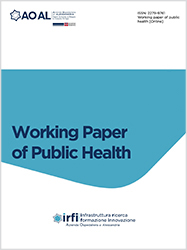Inibizione farmacologica dell’attività epilettiforme critica e intercritica

All claims expressed in this article are solely those of the authors and do not necessarily represent those of their affiliated organizations, or those of the publisher, the editors and the reviewers. Any product that may be evaluated in this article or claim that may be made by its manufacturer is not guaranteed or endorsed by the publisher.
##plugins.generic.dates.accepted##: 12 giugno 2023
Autori
L’epilessia è un disturbo neurologico caratterizzato dalla persistente predisposizione a sviluppare crisi epilettiche. La crisi epilettica è un evento parossistico provocato da una scarica ipersincrona di cluster di neuroni ipereccitabili del sistema nervoso centrale. L'elettroencefalogramma (EEG), indagine strumentale non invasiva, ricopre un ruolo cardine per quanto riguarda la diagnosi di epilessia, nonché nel monitoraggio dei risultati e nel trattamento, poiché in grado di rilevare anomalie epilettiformi critiche e intercritiche, fondamentali per la conferma e la classificazione delle crisi epilettiche. I farmaci antiepilettici rappresentano il primo approccio terapeutico, sebbene l’efficacia di tali farmaci sia limitata al solo controllo dei sintomi e richieda un’assunzione regolare da parte del paziente. Questi farmaci sfruttano i canali della membrana cellulare, modificandone la permeabilità e consentendo sia un aumento della neurotrasmissione inibitoria, sia la riduzione di quella eccitatoria, iperpolarizzando i neuroni e sopprimendo così la crisi epilettica. Lo scopo di questo elaborato è di approfondire il meccanismo d'azione dei principali farmaci antiepilettici, in relazione ai meccanismi fisiologici cellulari che regolano l'eccitabilità neuronale e il loro effetto a livello delle alterazioni epilettiformi nel tracciato EEG.
Come citare

Questo volume è pubblicato con la licenza Creative Commons Attribuzione - Non commerciale 4.0 Internazionale.






